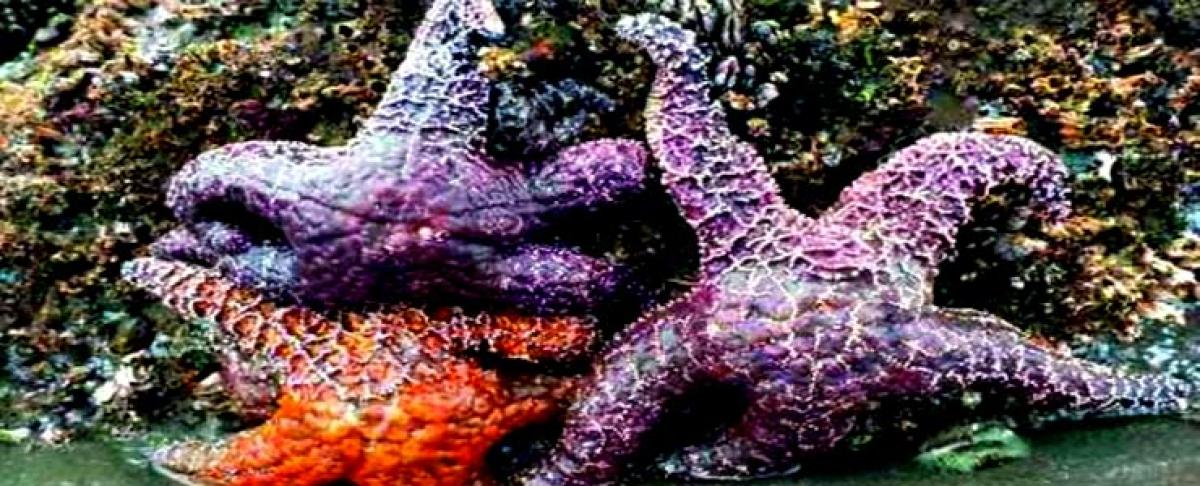Live
- Govt trying to grab lands for a song: BJP MP
- BRS an obstacle for investments: Jagga Reddy
- TGPSC all set for holding Group-III exams
- Delays dog LRS cases as applications pile-up
- TGSPDCL deploys 101 ERT vehicles
- JIH to host national conclave in city
- OU celebrates National Library Week with book exhibition
- Prakash Utsav to be celebrated today
- Survey staff turn a blind eye towards apartment dwellers
- Assembly to resolve on Constitutional amendment on age limit for legislators
Just In

x
Highlights
On the remote rocky shores of the western United States, low tide brings visitors to wave-splashed tide pools to marvel at ocean wonders usually hidden from view. But recently, largely missing from the bounty are the biggest draw: a rainbow-hued array of starfish.
Forks, (US): On the remote rocky shores of the western United States, low tide brings visitors to wave-splashed tide pools to marvel at ocean wonders usually hidden from view. But recently, largely missing from the bounty are the biggest draw: a rainbow-hued array of starfish.

“I do not know what you would call it other than catastrophic,” says Drew Harvell, a biologist at Cornell University, describing what is widely regarded as one of the worst marine disease events ever recorded. “It’s staggering, really, the millions of stars that have died. It is not apocalyptic or extreme to say that.” In recent years, millions of the starfish, also called sea stars, have had their legs curl up and pull away from their bodies, breaking the animals to pieces before they turn to mush, often in a matter of days.
Scientists have been left racing to figure out why. Once densely packed onto the rocks and on the ocean floor, the key predators are simply missing from some locations, their numbers cut by 95 percent or more.
The phenomenon, called Sea Star Wasting Syndrome, was first noticed by rangers in Olympic National Park in Washington state in 2013. It has now been documented from California to Alaska, and led to die-off that is bigger and more widely spread than any seen before.
Late last year, a group of researchers published findings in the Proceedings of the National Academy of Sciences saying they had found strong evidence that a virus was causing the disease. Researchers now are looking into why the virus is suddenly so much more widespread and deadly.
More On

Next Story
More Stories
ADVERTISEMENT
© 2024 Hyderabad Media House Limited/The Hans India. All rights reserved. Powered by hocalwire.com







